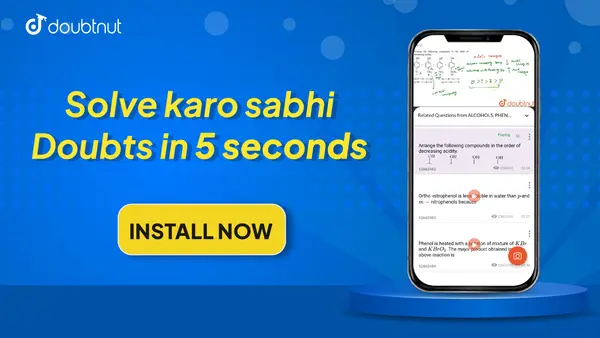Flux through an elemental area ds of the Gauss's surface is given by
Video Solution
|
Answer
Step by step video & image solution for Flux through an elemental area ds of the Gauss's surface is given by by Physics experts to help you in doubts & scoring excellent marks in Class 12 exams.
Updated on:21/07/2023
Knowledge Check
- Question 1 - Select One
The total electric flux ϕ through the entire area of a closed surface is given by
Aϕ=∮→E×→dsBϕ=∮→E⋅→dsCboth 'a' and 'b'Dnone of these - Question 1 - Select One
Consider a rectangular coil of wire carrying constant current I, forming a magnetic dipole. The magnetic flux through an infinite plane that contains the rectangular coil and excluding the rectangular area is given byϕ. magnetic flux through the area of the rectangular area is given by ϕ. Which of the following option is correct?
Aϕi=ϕ0Bϕi=−ϕ0Cϕi>ϕ0Dϕi<ϕ0 - Question 1 - Select One
Electric flux ϕ through an element area △S when area is placed in region of uniform field E is
AE×△SBE△SC△S×EDE(△S).sinθ - Question 1 - Select One
A circular coil, carrying a constant current i s kept in the x - y plane. The magnetic flux through the entire x - y plane exluding the area of the circular coil is given by ϕ and the magetic flux through the area of the circular coil area is given by ϕ0, then
Aϕ>−ϕ0Bϕ<ϕ0Cϕ=−ϕ0Dϕ=ϕ0 - Question 1 - Select One
Mathematically, the electric flux (ϕ) through small area ds placed in electric field E is given by
AdsEcosθB→ds⋅→EC→E/→dsDboth 'a' and 'b' - Question 1 - Select One
When no charge is confined with in the Gauss's surface, it implies that -
AE = 0B→E and →ds are parallelC→E and →ds are mutually perpendicularD→E and →ds are inclined at some angle - Question 1 - Select One
five charge q1,q2,q3,q4and q5 are fixed at their positions as shown in figure .s is Gaussian surface .The Gauss's law is given by ∮→E.→ds=qε0

Which of the following statement is correct?A→E on the L.H.S of the above equation will have a contribution from q1,q5,and.q3 while q on the RHS will have a contribution from q2 and q4 only.B→E on the LHS of the above equation will have a contribution from all charges while q on the RHS will have a contribution from q2 and q4 only.C→E on the LHS of the above equation will have a contribution form all charges while q on the RHS will have a contribution from q1 q2 and q5 only.DBoth →E on the LHS and q on the RHS will have a contribution form q(2) and q4 only.
Similar Questions
The total electric flux through any closed surface from gauss law is given by ?
View SolutionA uniform electric field aˆi+bˆj intersects a surface of area A. What is the flux through this area if the surface lies (a) in the yz plane, (b) in the xz plane, (c) in the xy plane?
View SolutionA uniform electric field →E=aˆi+bˆj intersects a surface of area A .What is the flux through this area if the surface lies in the yz plane?
View Solution

